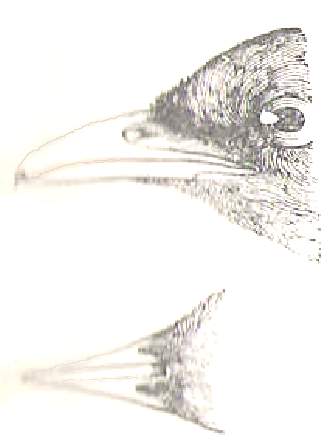
Picture of Cotinga
|
The genus Ampelis, being very composite in its
character was naturally broken up at a later stage in history, and was
temporarily used in its original sense for the Waxwing and its congeners.
However, the Waxwing today form the genus Bombycilla within the family
Bombycillidae - the genus Ampelis no longer exists in today's 21st Century
classification of birds.
The name chatterer has also been generally conferred,
for want of a better, on a group of birds, one of the most beautiful
of which Brisson had termed
Cotinga.
This group, all the members
of which inhabit the Neotropical Region, is a very natural one, and has
long been regarded as a separate Family, properly called Cotingidae,
though
it is closely allied to the Pipridae (MANAKIN) family (together
these two families the old division HETEROMERI of the MESOMYODI of Garrod
and Forbes).
A considerable number of these birds are remarkable
for the extraordinarily abnornal form of some of their wing-quills, and
occasionally of their wing-coverts - a feature in the former case observable
also among the Pipridae, and, where existing, generally confined
to the male bird. Many of them also are brilliantly coloured, and
at least one, today known as the the Pompagour Cotinga (Xipholena punicea)
but known as the Pompadour Chatterer in the 19th Century (and had
a latin name of Xipholena pompadora at that time) was given its
19th Century name by Edwards (Gleanings, ii. p. 275, pl. 341) after
the celebrated Madame de Pompadour, to whom it and other birds were being
sent, when the ship that bore them from Cayenne fell a prize to a British
cruiser. The Pompadour Cotinga is of a hue scarcely to be seen in
any other bird.
|





